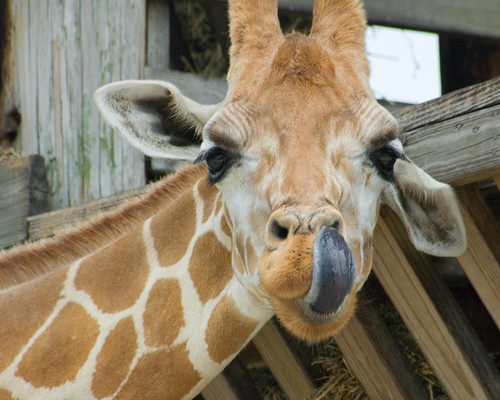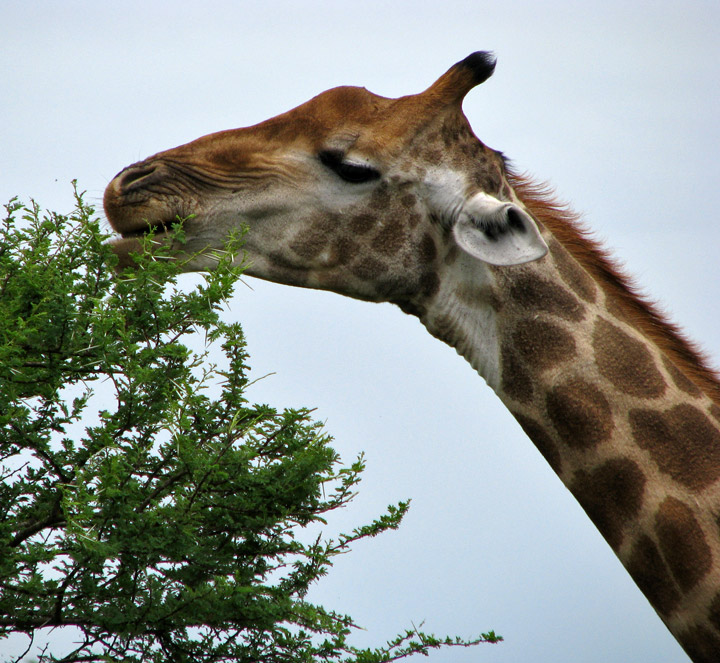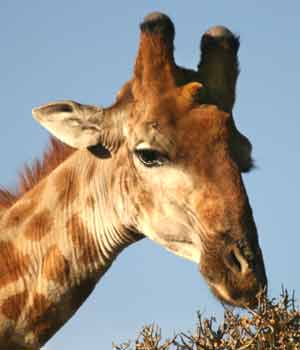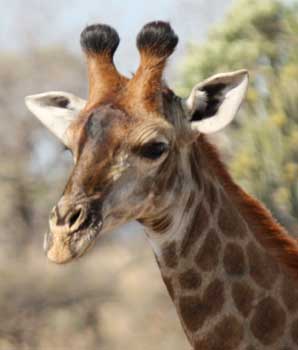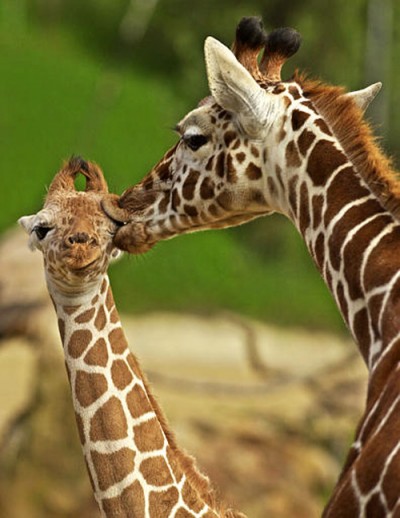Are you ready to digest more information on giraffes?!
Giraffes are herbivores, meaning they only eat plant-based
foods. More specifically, giraffes
are classified as browsers because their diet consists more of trees, and less
of grasses. Because they rely on
only leaves to energize their bodies, they must eat large quantities. Their daily intake can be up to 65
pounds, but they only need 15 pounds to survive. Giraffes usually live in environments such as the savannas,
woodlands, and grasslands that provide sufficient resources for their eating
habits.
Acacia trees form the bulk of a giraffes diet. From these
trees giraffes are able to eat the leaves and twigs using their strong, long
tongues. The Acacia tree leaves
contain a lot of water, which allows them to attain water from resources other
than lakes or streams. The
advantage of having high-water content leaves as a food source allows the
giraffe to go many days without drinking water. If they do drink from a water source such as a lake, they
can drink up to 12 gallons.

Since both males and females feed from the same type of
plants, it is important to not create competition among their own species. Males often feed on leaves higher on
the trees than females, thus reducing competition for food. Because males feed on higher parts of
the tree, their diets contain more fiber while the female’s diet is more
nutritious due to eating from lower parts of the tree. For both females and
males, eating can take up to 75% of their day, especially during dry season
when resources are limited, which requires longer browsing time.
One characteristic that is important to a giraffe’s diet is
their unique tongues. They are
about 18 inches long. Having this
long of a tongue allows the giraffe to reach leaves and break branches. Their tongues are also extremely
strong, allowing them to maneuver through and deal with thorny branches.
Another important characteristic of a giraffe’s mouth is their thick
salvia. It is produced in large
quantities during eating times, allowing them additional break down of food particles. It also protects the giraffe’s throat
from the possibility of being harmed by swallowed thorns.
Additional important foraging behaviors include the way in
which they obtain water from lakes and streams. Because their legs are longer than their necks, they must
spread their legs far enough apart to allow their necks to reach the
water. They also have very
flexible necks, allowing them to reach high parts of a tree for leaves and
also, low level streams for water
After giraffes eat their large amounts of leaves and
branches, it is important for them to digest these nutrients properly. Their ruminant stomach allows them to
do this. After swallowing their
food, a giraffe then regurgitates it back up into its mouth for additional
grinding and break down of the food.
When giraffes drink water from watering holes, they almost always travel
in packs. This allows them to
guard each other from predators while the others drink from the water hole in a
vulnerable position (legs extended out).
Interesting fact of the week: Giraffes have a dark colored tongue, which prevents it from getting sunburnt while reaching for leaves!
"Giraffe - The Facts." GCF. Giraffe Conservation Foundation. Web. 11 Feb. 2012. <http://www.giraffeconservation.org/giraffe_facts.php?pgid=39>.
"Giraffe Fact Sheet." San Diego Zoo. Global. Web. 11 Feb. 2012. <http://library.sandiegozoo.org/factsheets/giraffe/giraffe.htm>.
"Giraffe." San Diego Zoo's Animal Bytes. San Diego Zoo. Web. 11 Feb. 2012. <http://www.sandiegozoo.org/animalbytes/t-giraffe.html>.









